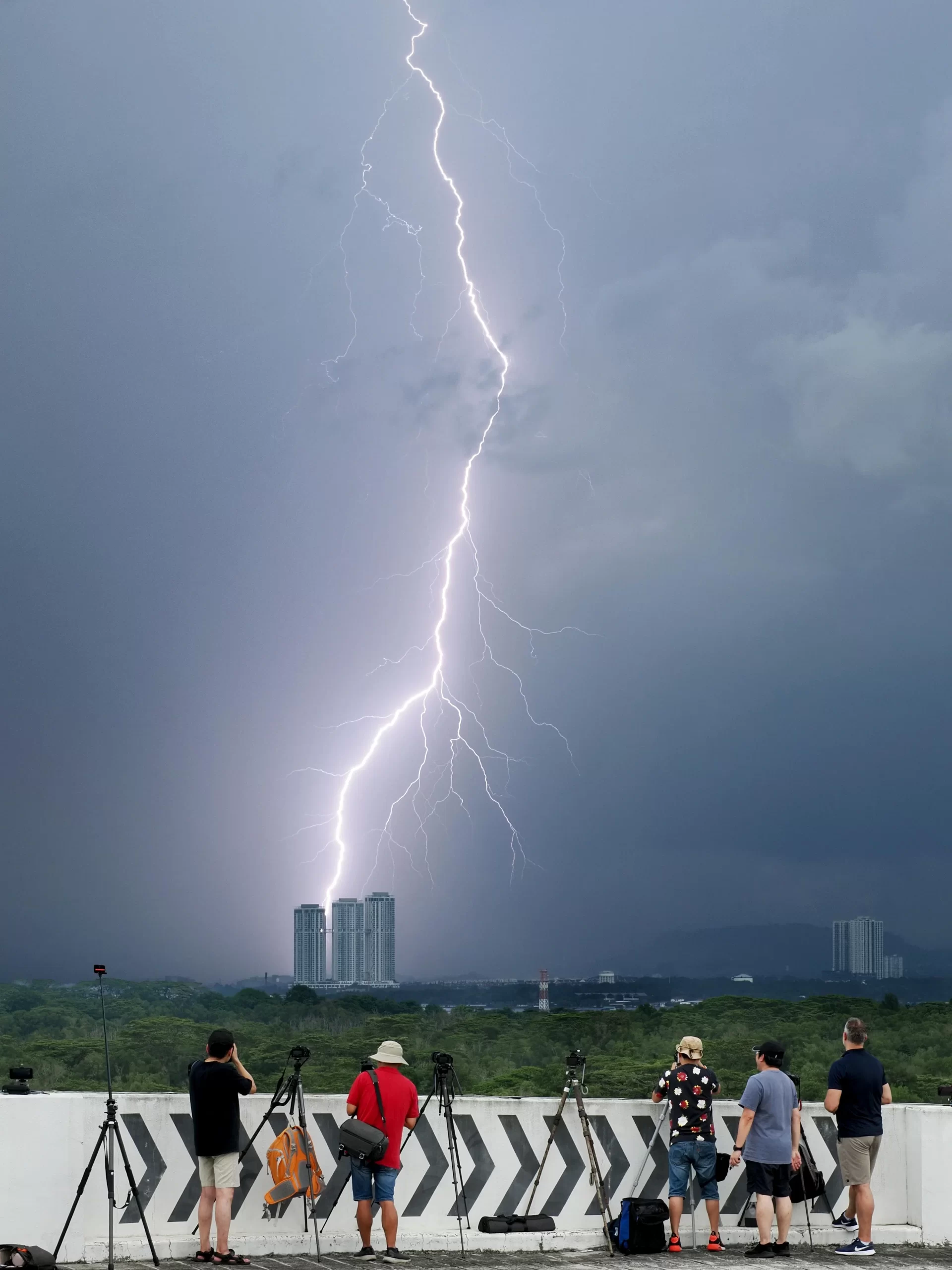April 27, 2023
SINGAPORE – Whether rain or shine, there is lightning streaking across Singapore’s skies on 175 days a year, or about half the number of days every year.
Three avid photographers, who are part of an interest group called SGStormTrackers, have been carrying their cameras and chasing the perfect shot of lightning bolts across the skies.
One of them, Mr Wong Liang Piow, 47, said he started chasing lightning when he got his hands on the first camera that allowed photographers to capture lightning easily at night.
Mr Wong, who has been on a quest to capture lightning shots since 2014, said: “I love chasing lightning because the intensity of nature is frozen in a moment which our eyes cannot visualise.”
SGStormTrackers members can count themselves lucky that they are in Singapore, which can stake a claim to being one of the lightning capitals of the world.
Mr Paul Lee, 44, and Mr James Gan, 54, together with Mr Wong, founded the group during the pandemic three years ago.
Now 120 members strong, the group usually meets every few months, said Mr Lee. “But lightning season has given us a reason to hang out with each other every weekend,” he added.
Mr Lee said a big part of the fun he has chasing lightning comes from the planning and tracking of a storm.
He said: “On some special days when the sky absolutely blows up, the scene is stunning beyond words. The sound, the huge flashes, the smell of the storm, the wind… it’s unbelievable.”

Mr Wong Liang Piow, who has been chasing lightning for over nine years, captured bolts striking Bukit Batok Transmitting Station. PHOTO: WONG LP
Novice shutterbugs keen to take photos of lightning can join their interest group, where experienced photographers can give them tips on the best conditions to shoot, such as location and wind direction, said Mr Gan, who uses two apps for storm chasing: Lightning Alarm and NEA’s myENV mobile app.
myENV gives information about the movement of storm clouds over Singapore and the weather forecast, among other things.
In Singapore, about 50 per cent of the year’s lightning days are in April, May, October and November – months that fall between the two major monsoon seasons.
The north-east monsoon blows from December to early March, and the south-west monsoon is from June to September.

Mr Paul Lee, 44, captured lightning striking over the area close to Marina during last year’s lightning season. PHOTO: PAUL LEE
The island gets warmer weather during inter-monsoon season, which, along with other conditions, results in more lightning activity, said the Meteorological Service Singapore (MSS), which falls under the National Environment Agency.
An MSS spokesman said that lightning strikes are produced by thunderstorm clouds, which occur when there is moisture in the air amid an unstable atmosphere.
Lightning can also strike even when there is no rain or thunderstorm clouds in the area. Although the bolts mostly strike within 6km of a thunderstorm cloud, lightning strikes have been documented to occur more than 10km away, said the spokesman.
When people are outdoors and thunder is heard, they should seek shelter, he added.

Lightning strikes near Seletar Golf Course during this year’s lightning season. PHOTO: JAMES GAN
He said: “People in open spaces as well as tall structures are more at risk of being struck by lightning. While outdoors and thunder is heard, seek shelter in a building or a car, and wait at least 30 minutes after the thunder is last heard before resuming outdoor activities.”
Associate Professor Koh Tieh Yong from the Singapore University of Social Sciences said the reason for greater lightning activity outside monsoon season is stronger solar radiation and light winds, making the atmosphere more conducive for the formation of thunderstorm clouds.
He said: “Strong solar radiation leads to higher surface temperatures, and hence the air is warmer and more buoyant.”
He added that regional winds are light but often become more intense as well, due to the absence of monsoon systems.

Interest group ‘SGStormTrackers’ gather at Yishun to capture lightning strikes over the island in April this year. PHOTO: PAUL LEE
Prof Koh, who is a weather and climate scientist, said the absence of such a large system gives way to smaller local weather systems like land-sea breezes that spawn brief but strong local gusts.
With the predominance of smaller-scale weather systems like thunderstorms during inter-monsoon season, energy within the system itself is more concentrated, he added.
“Up-and-down air movement is enhanced, causing stronger electrical charging as cloud droplets collide, resulting in more frequent lightning activity,” he said.


